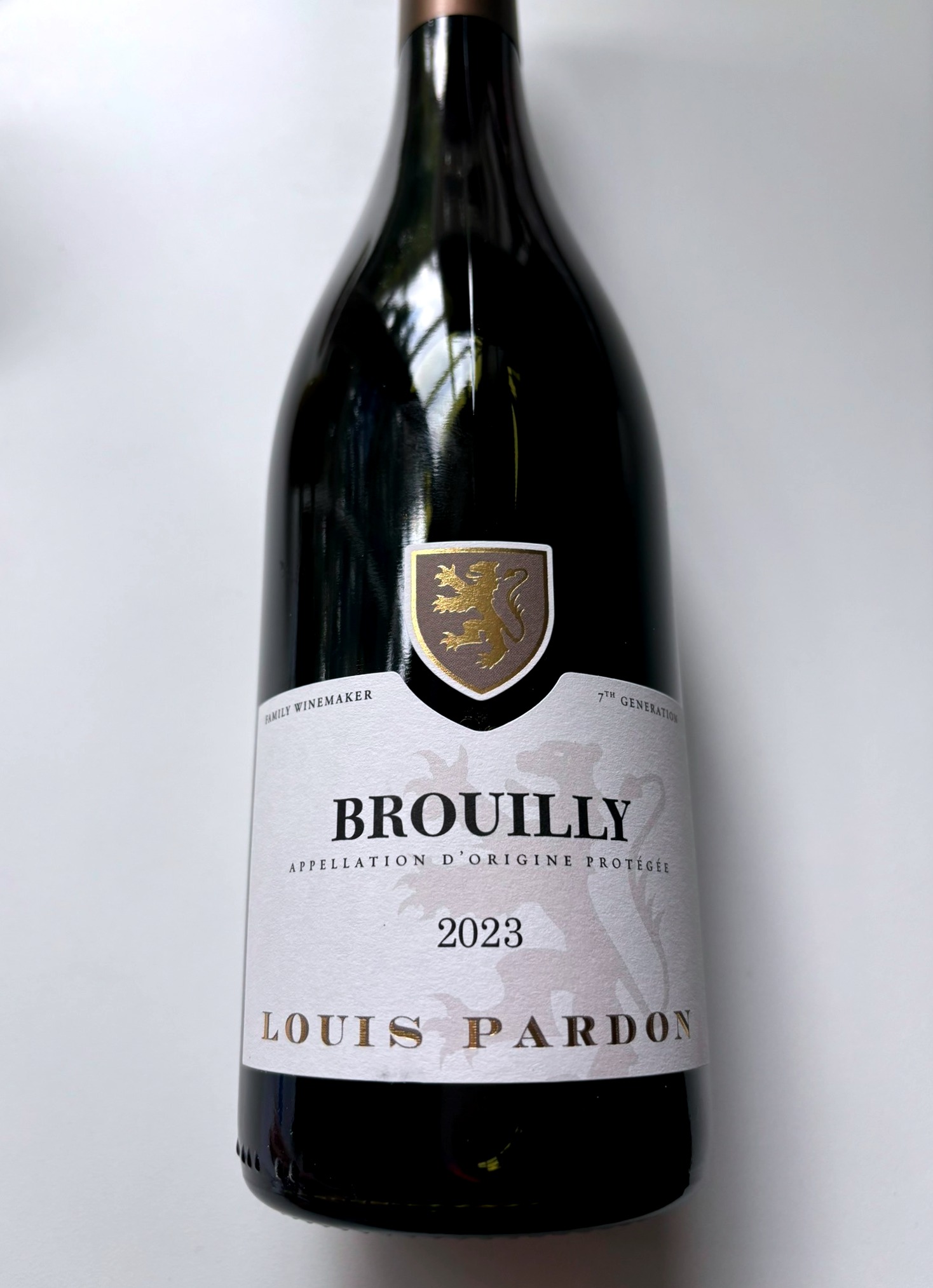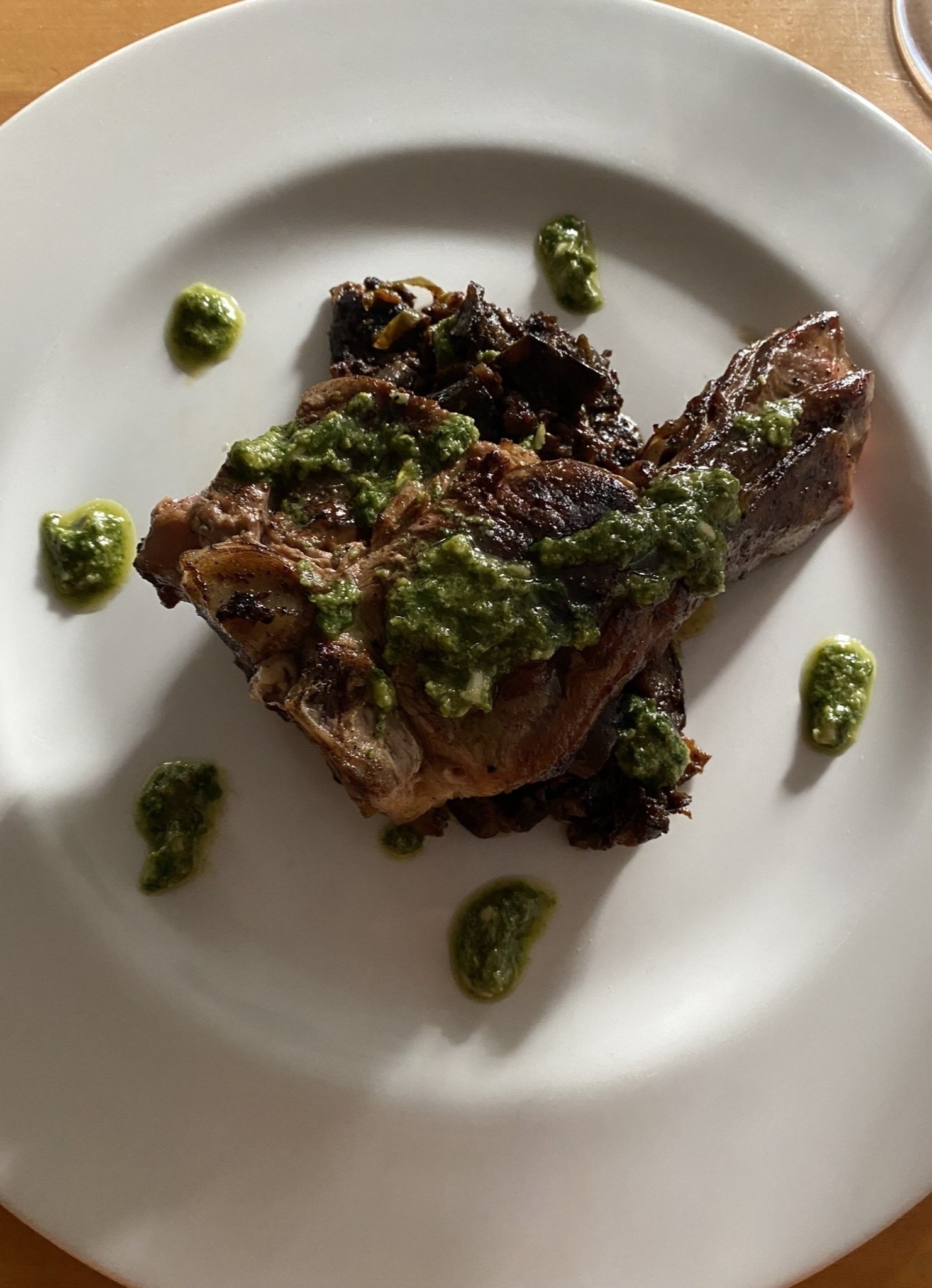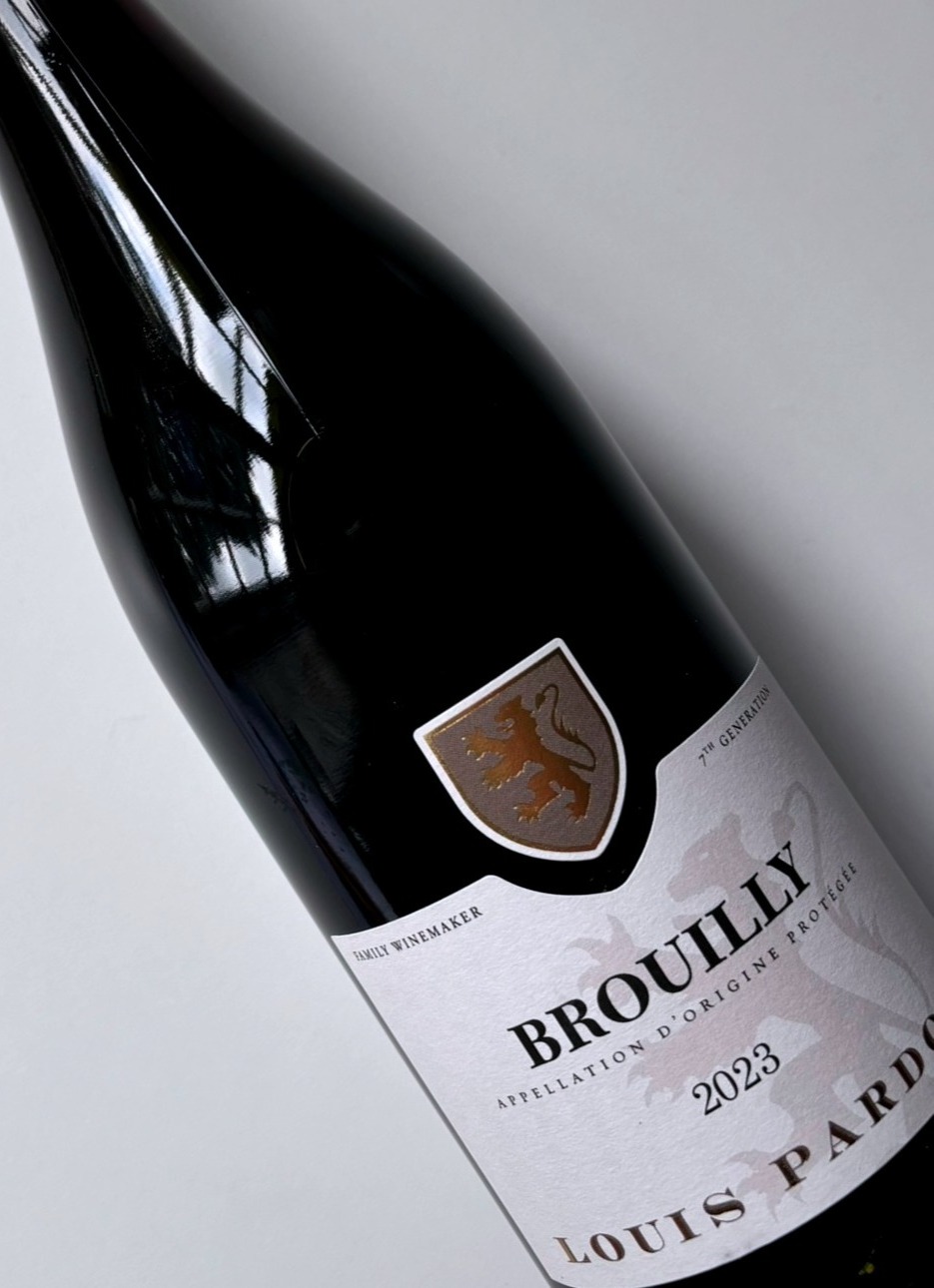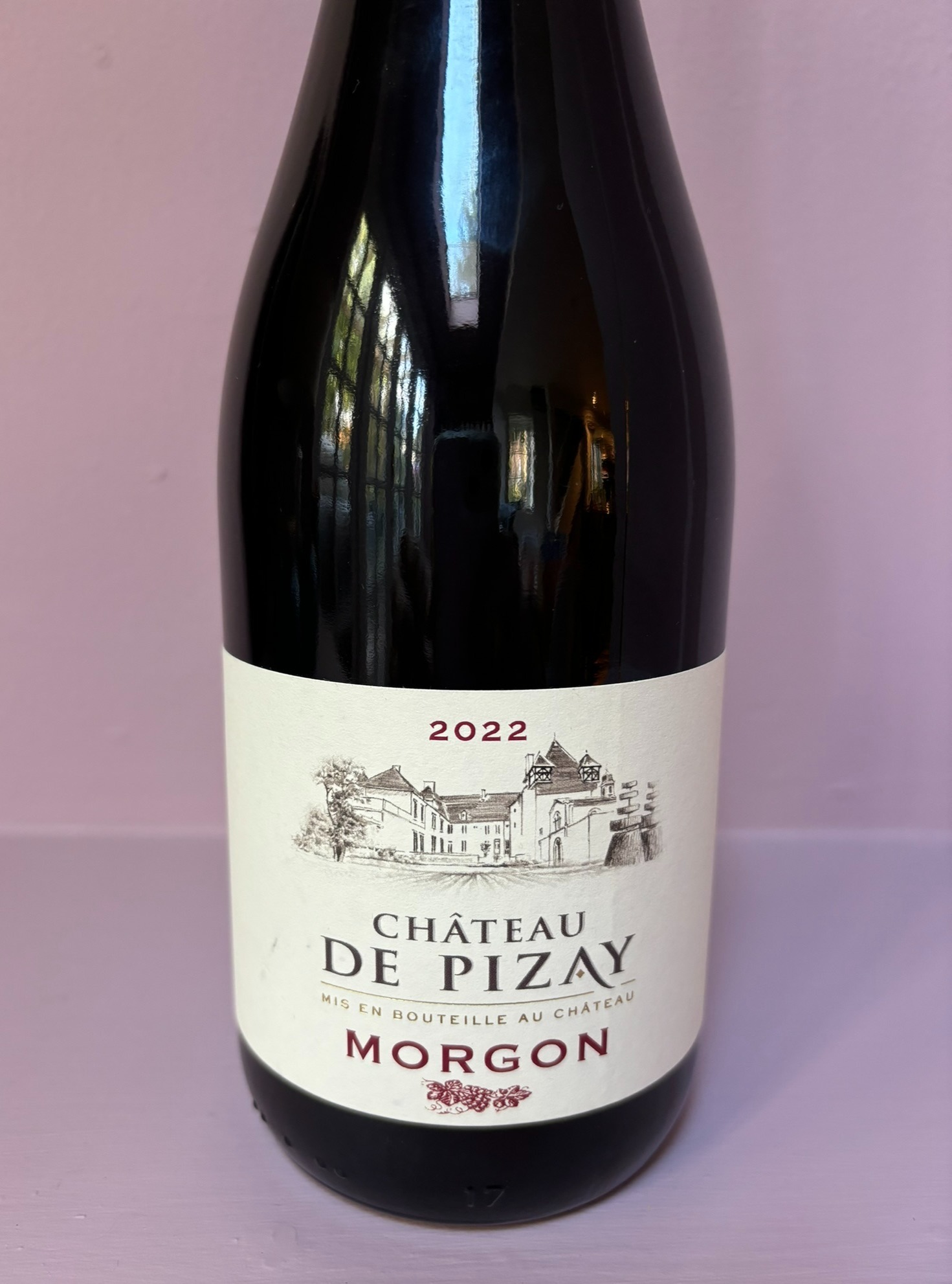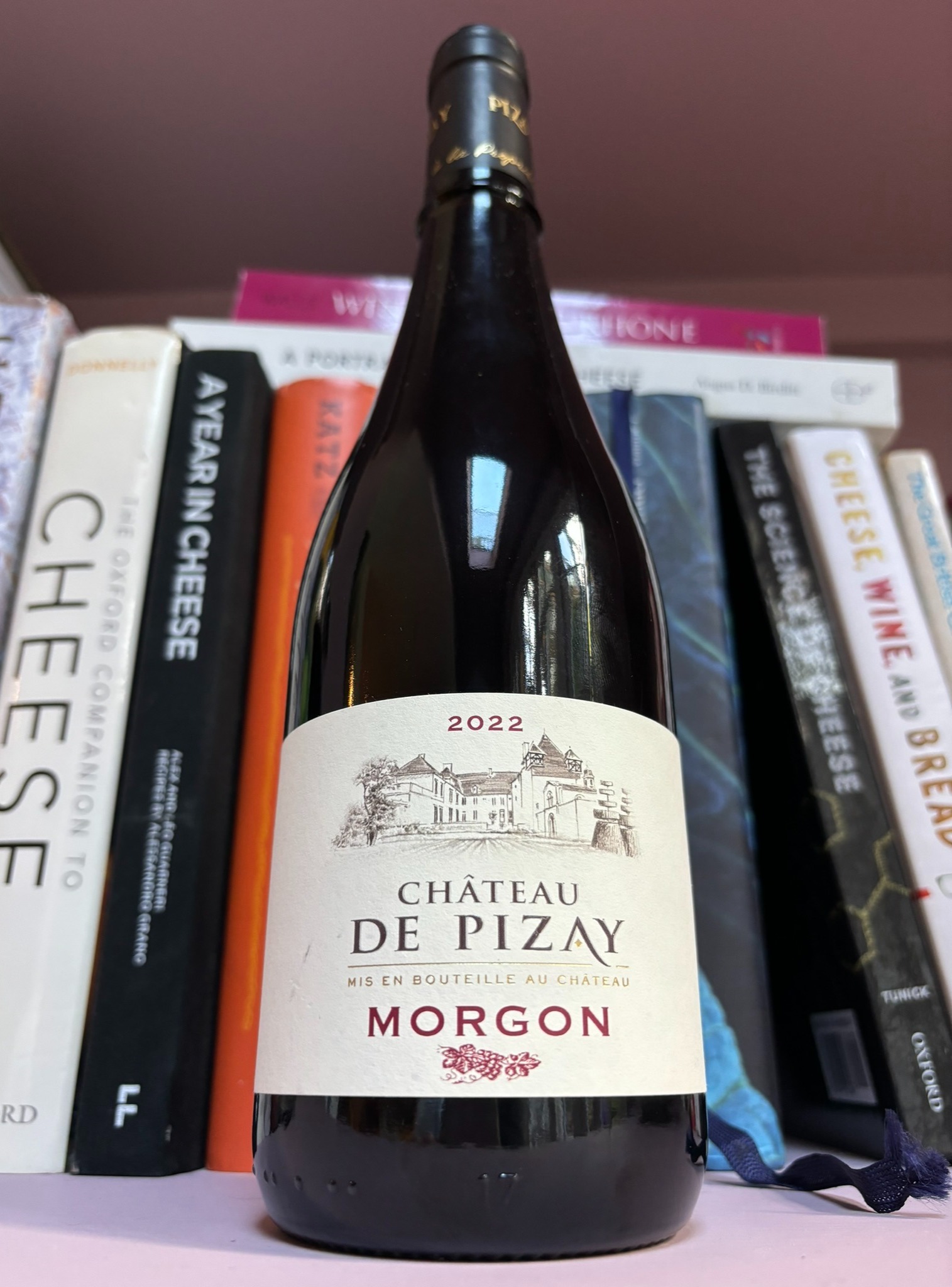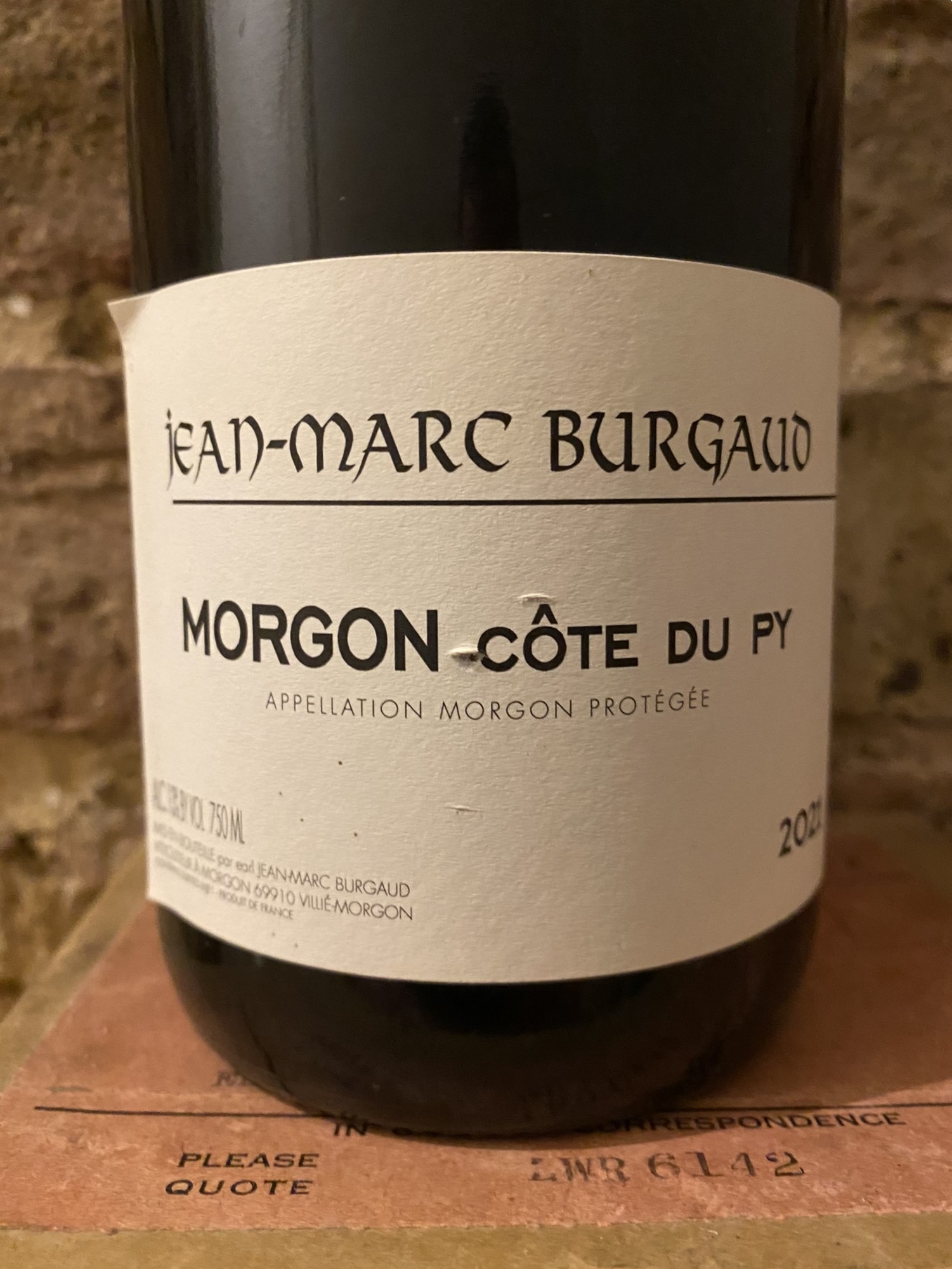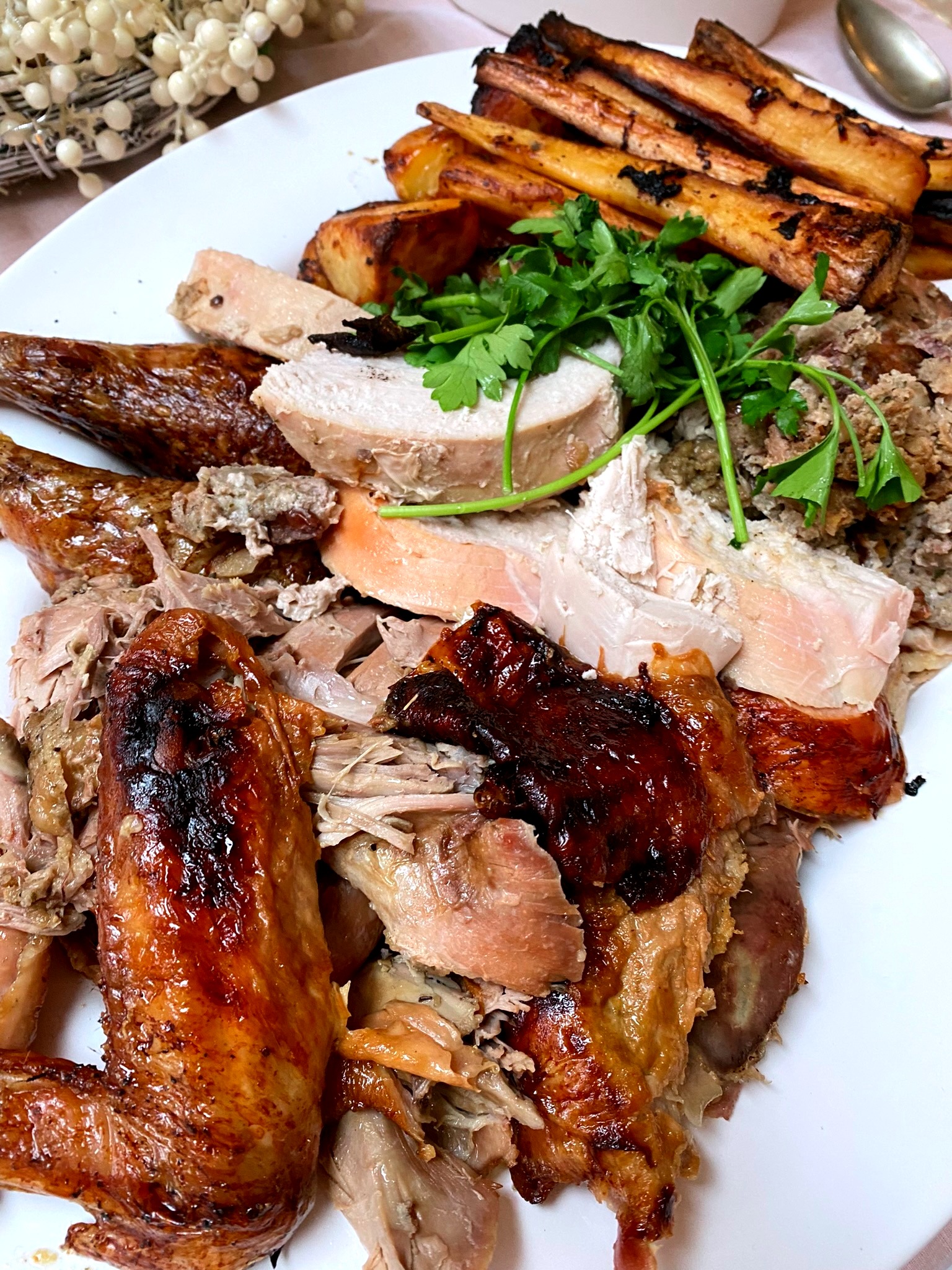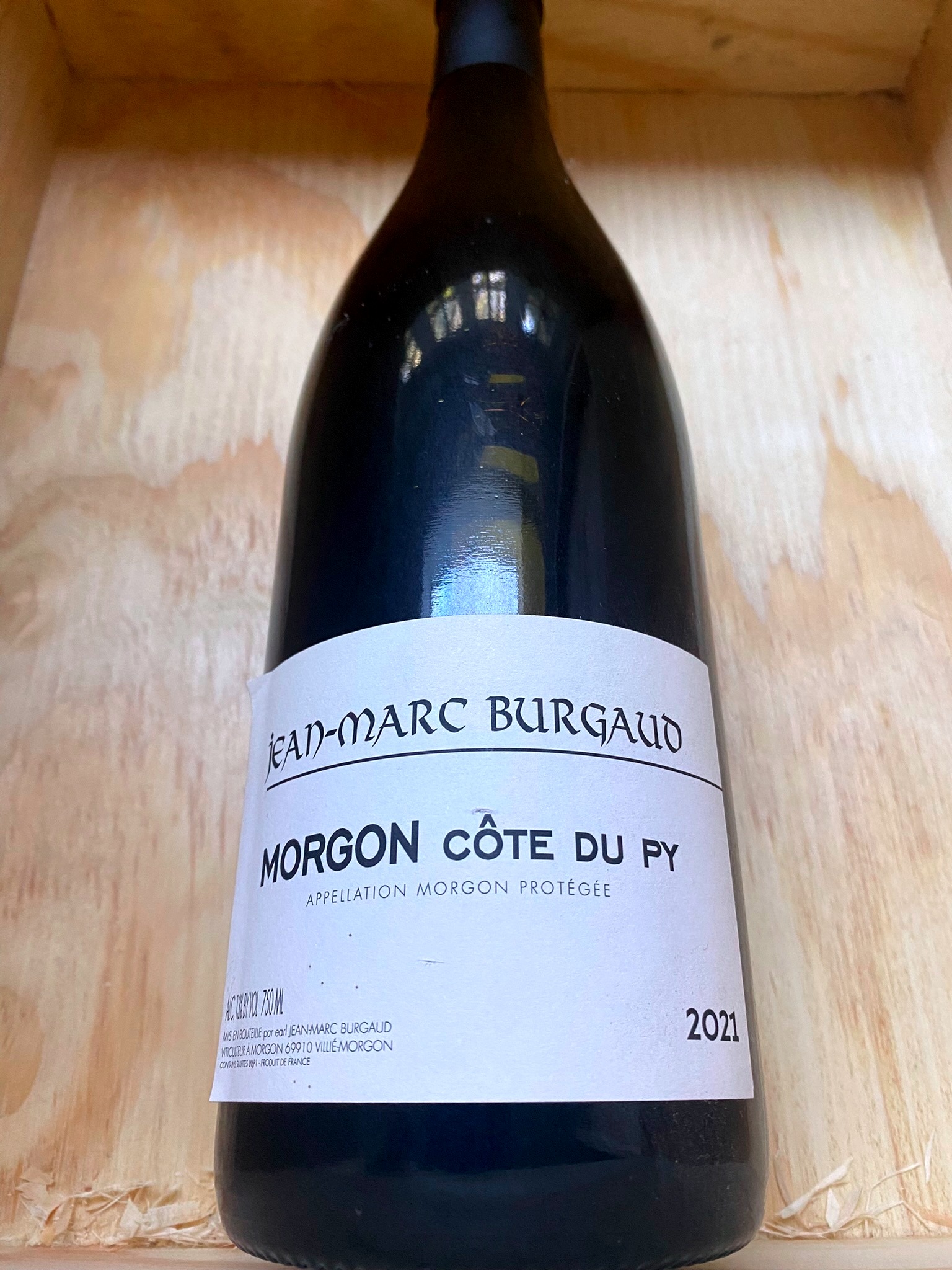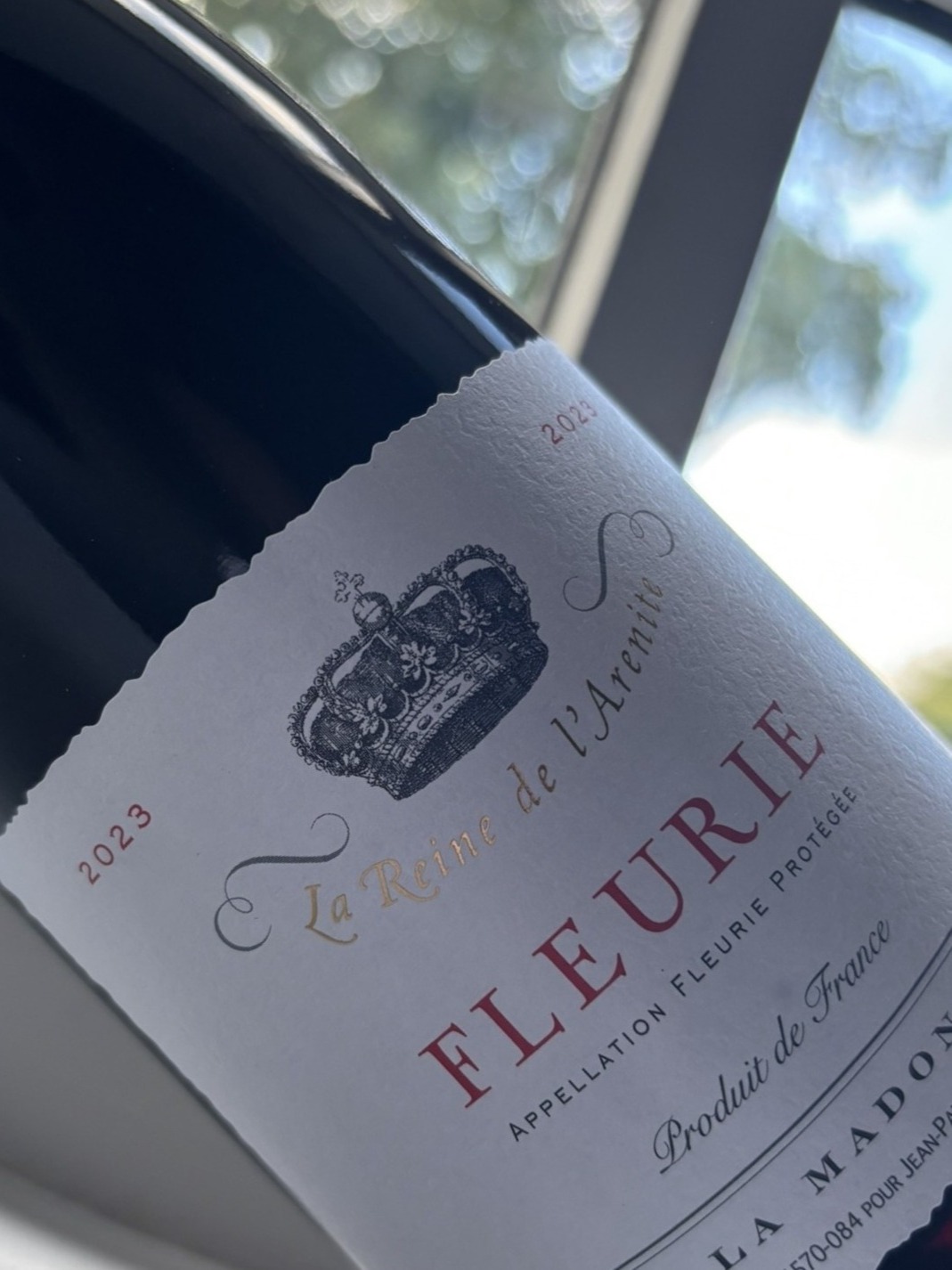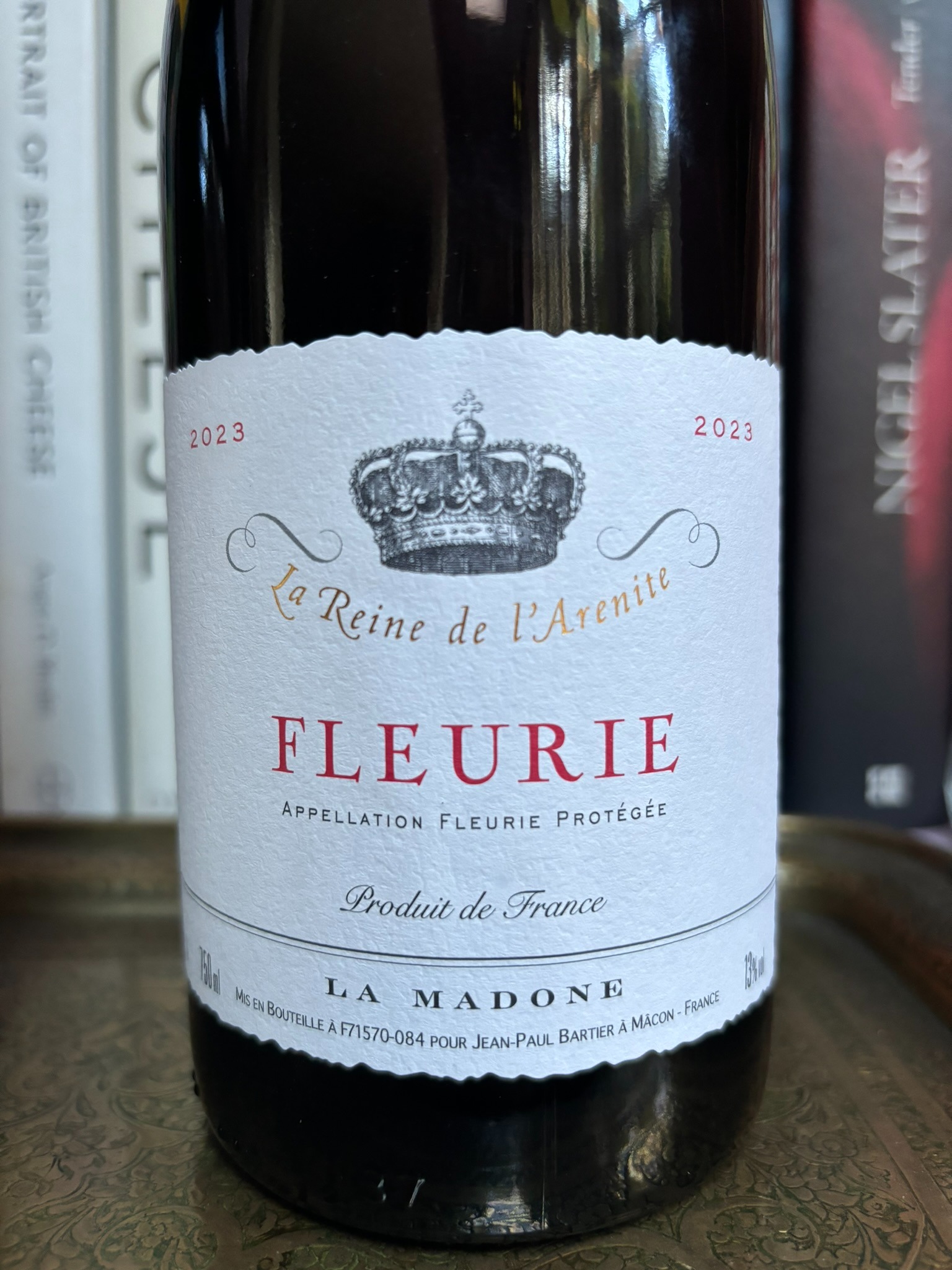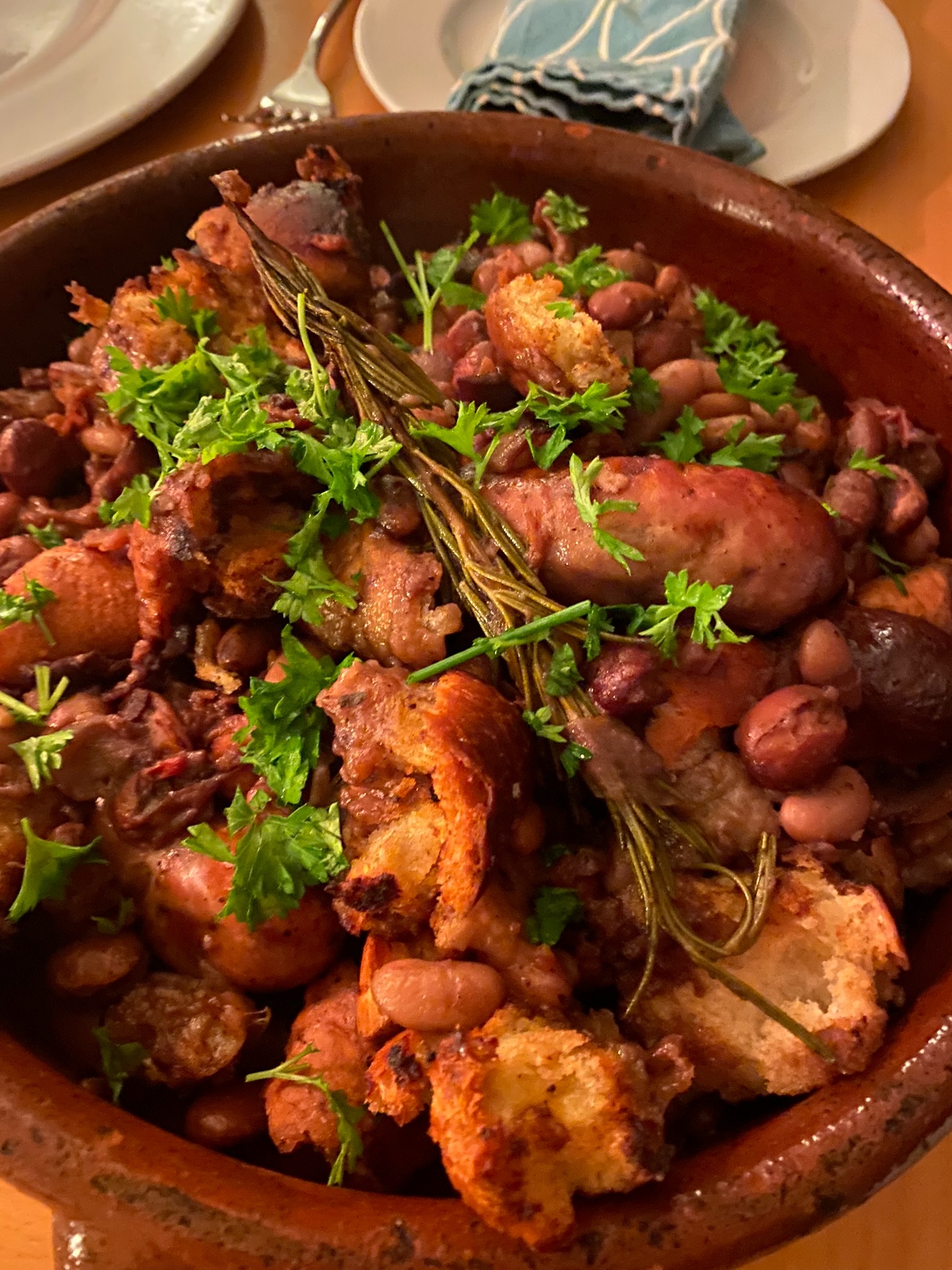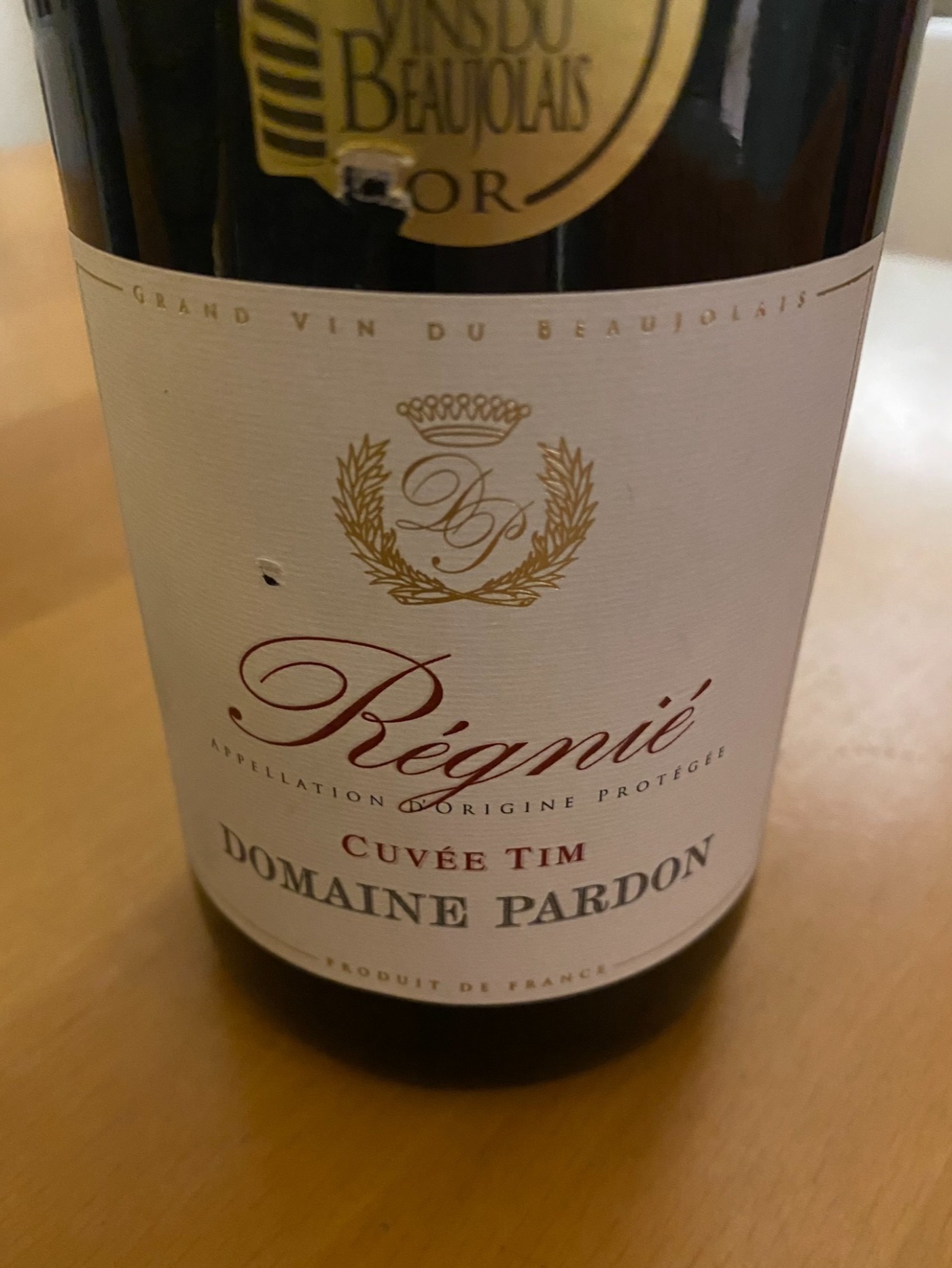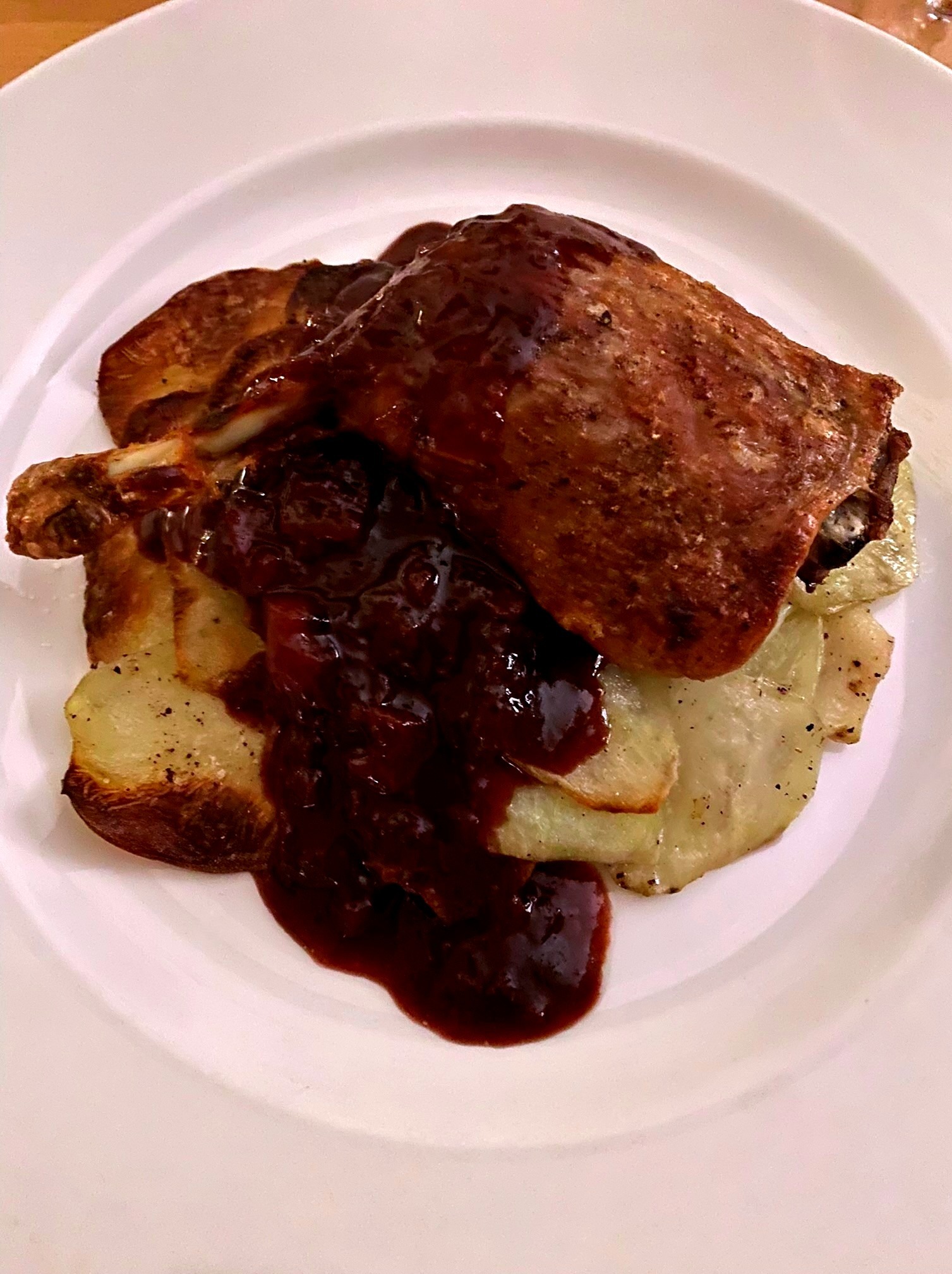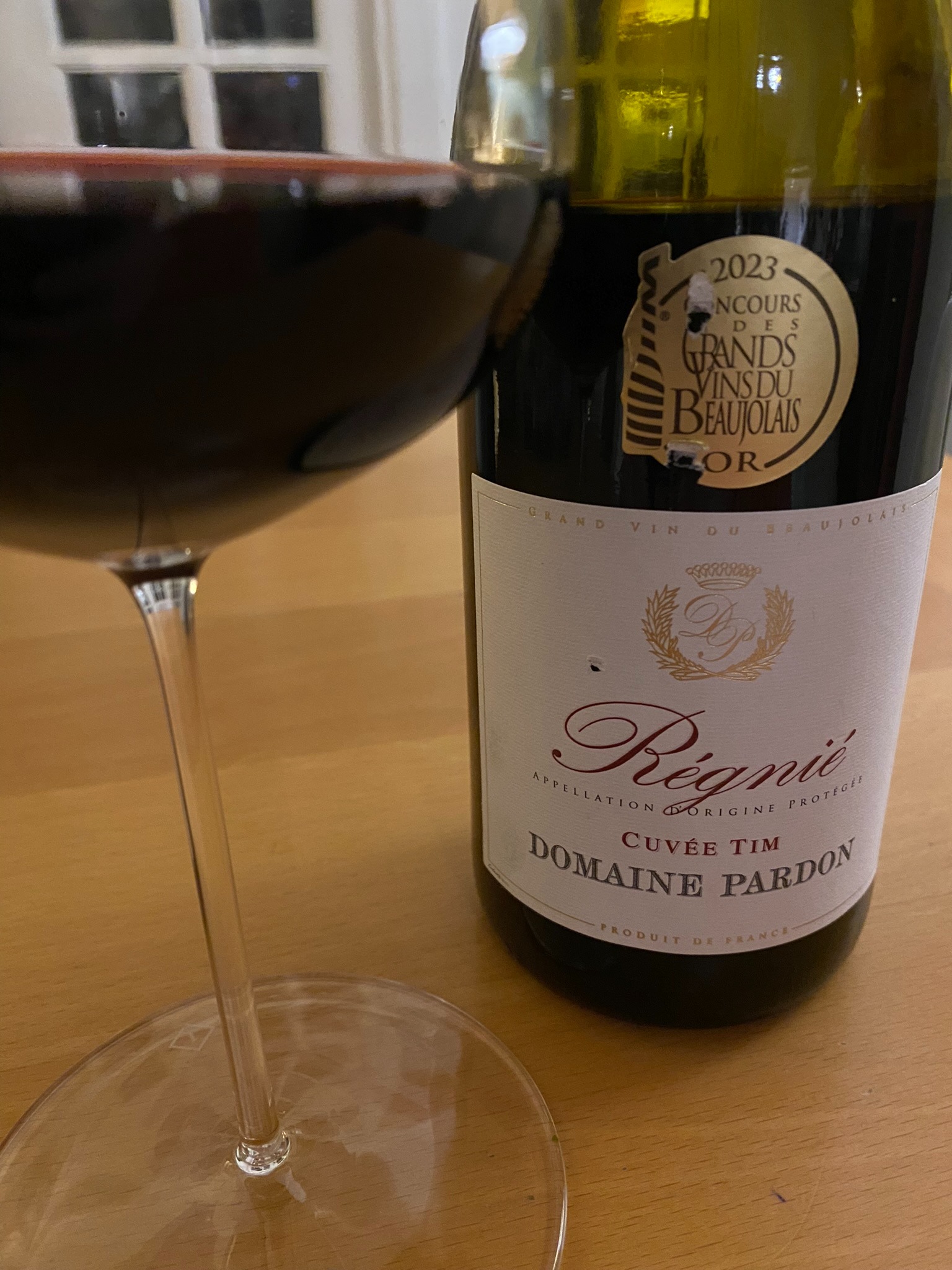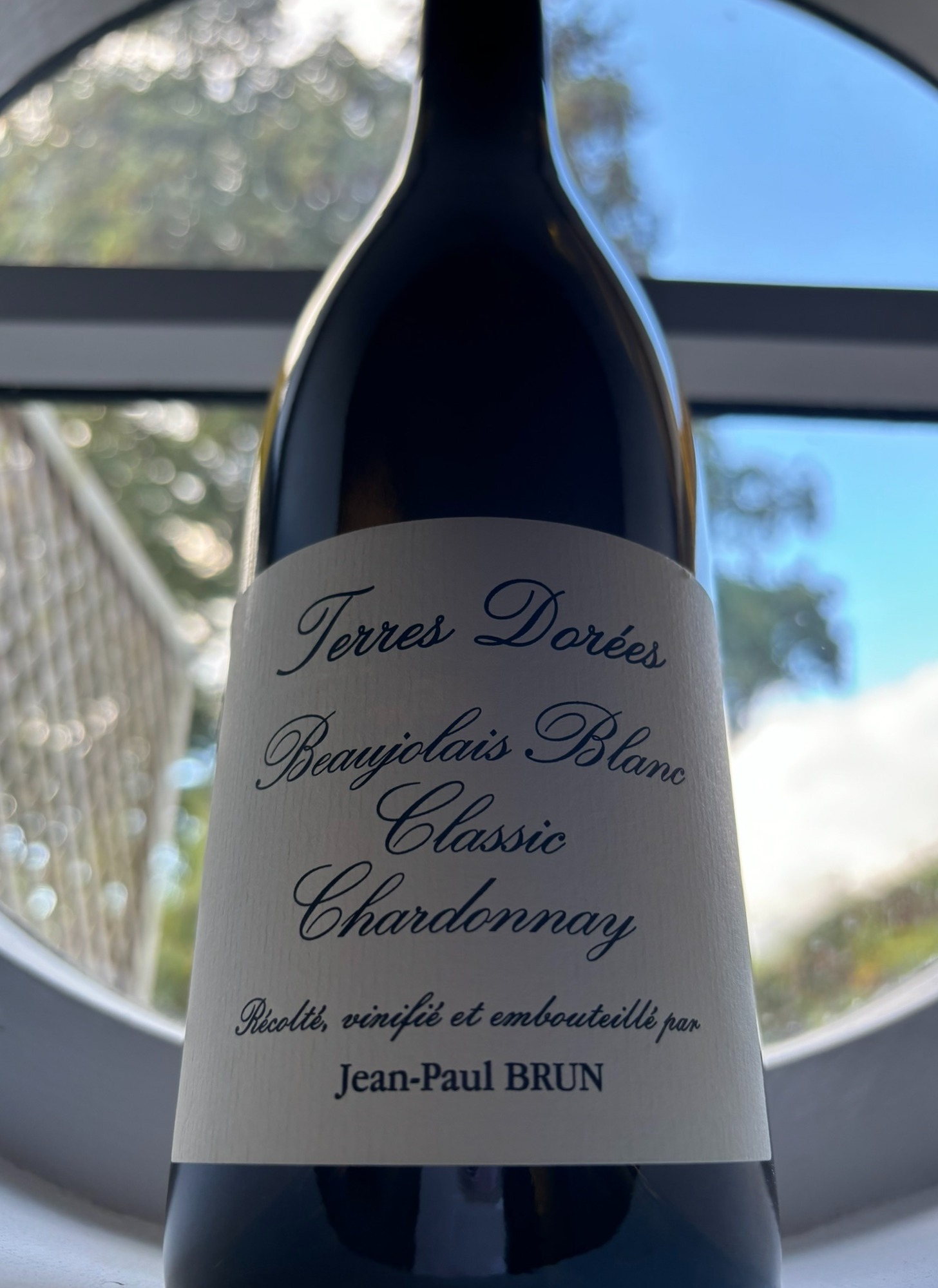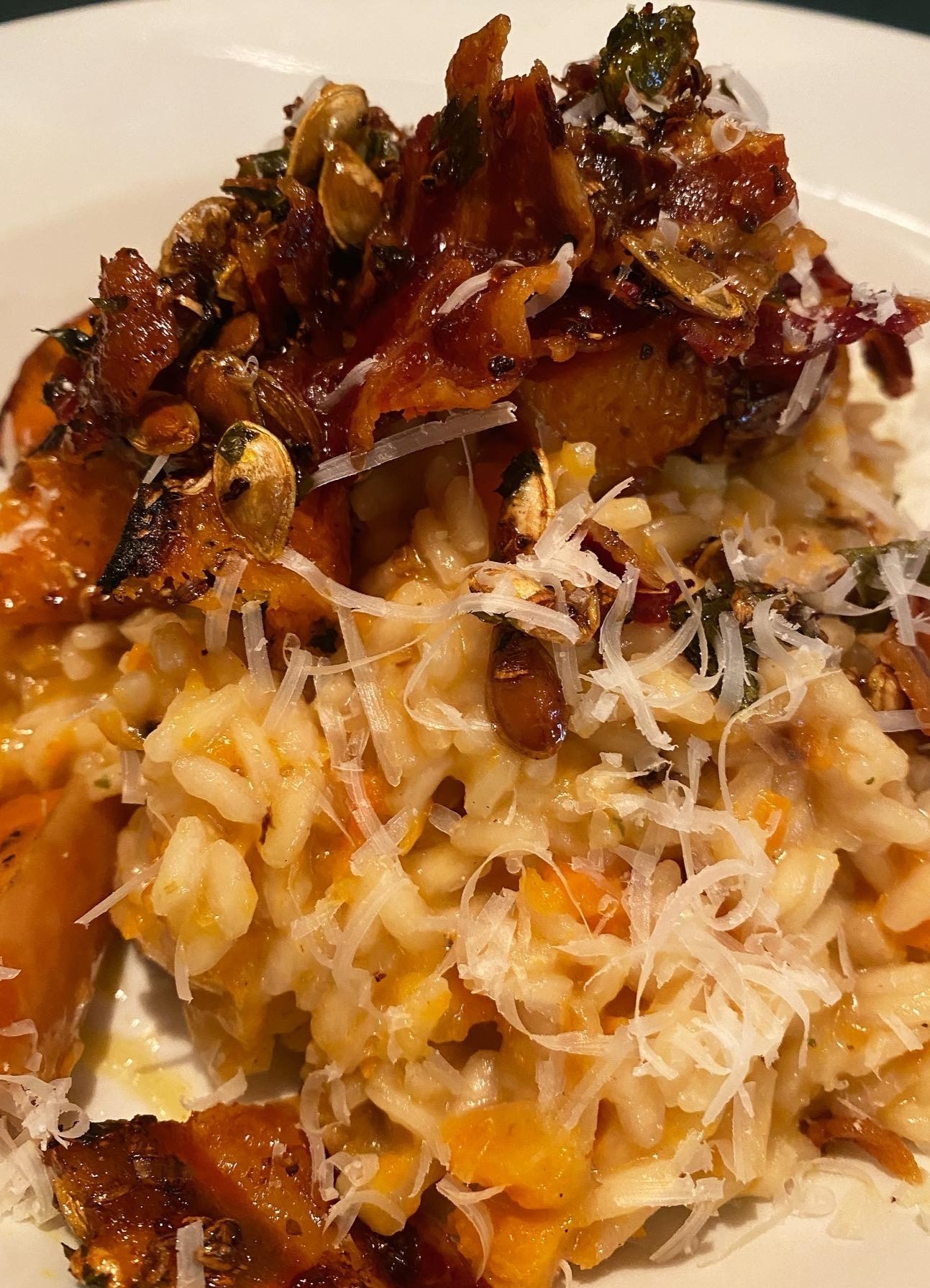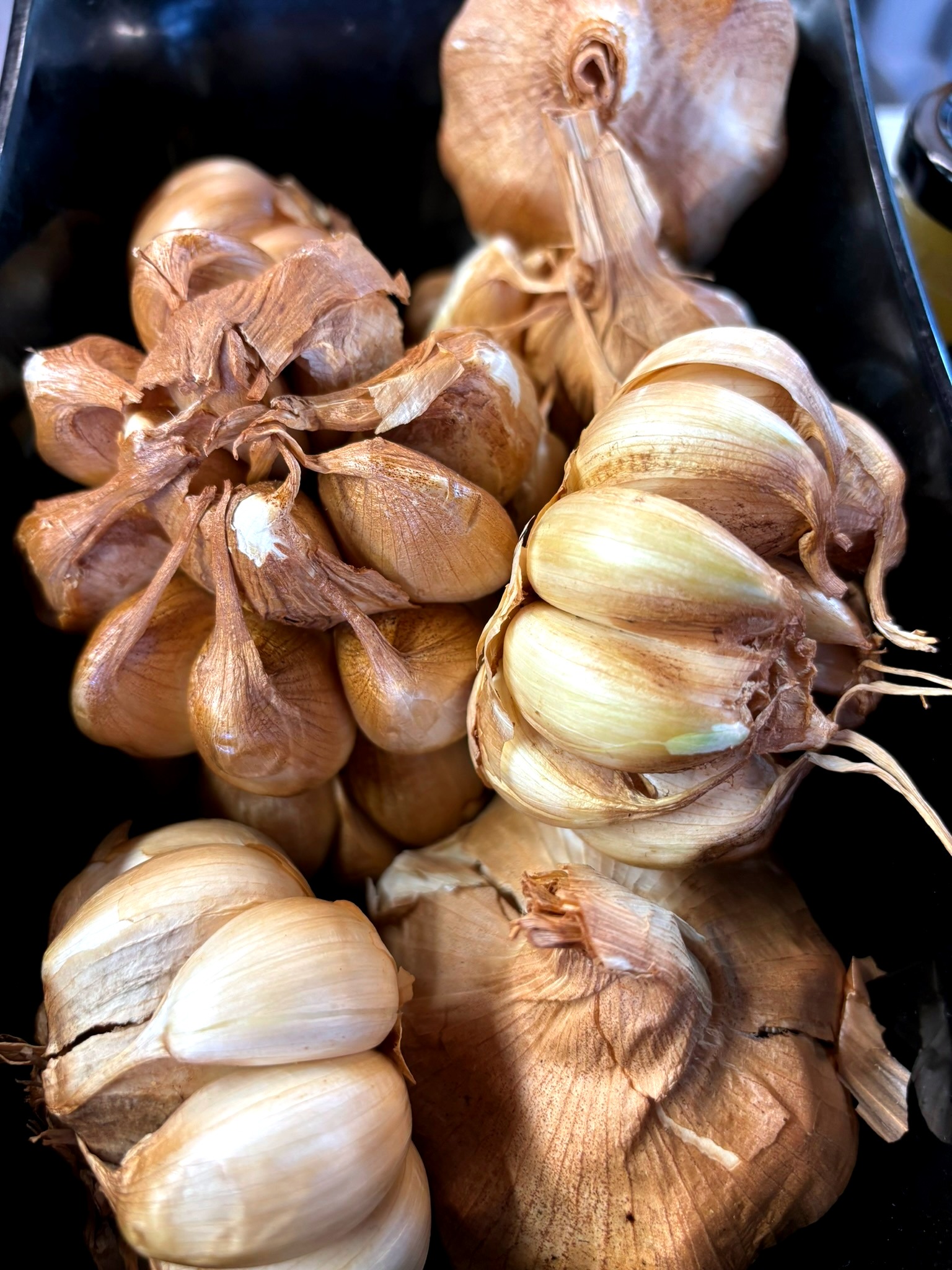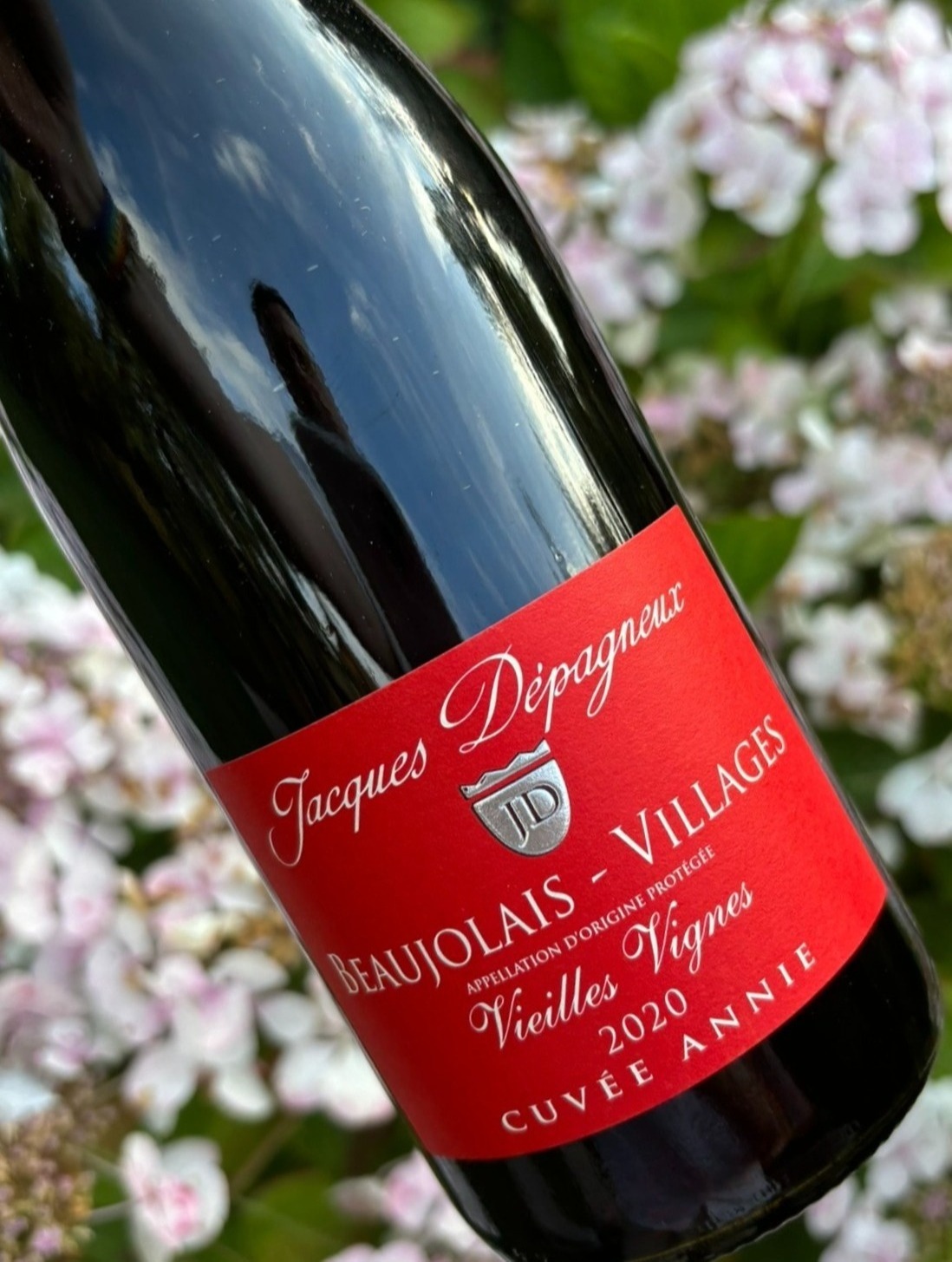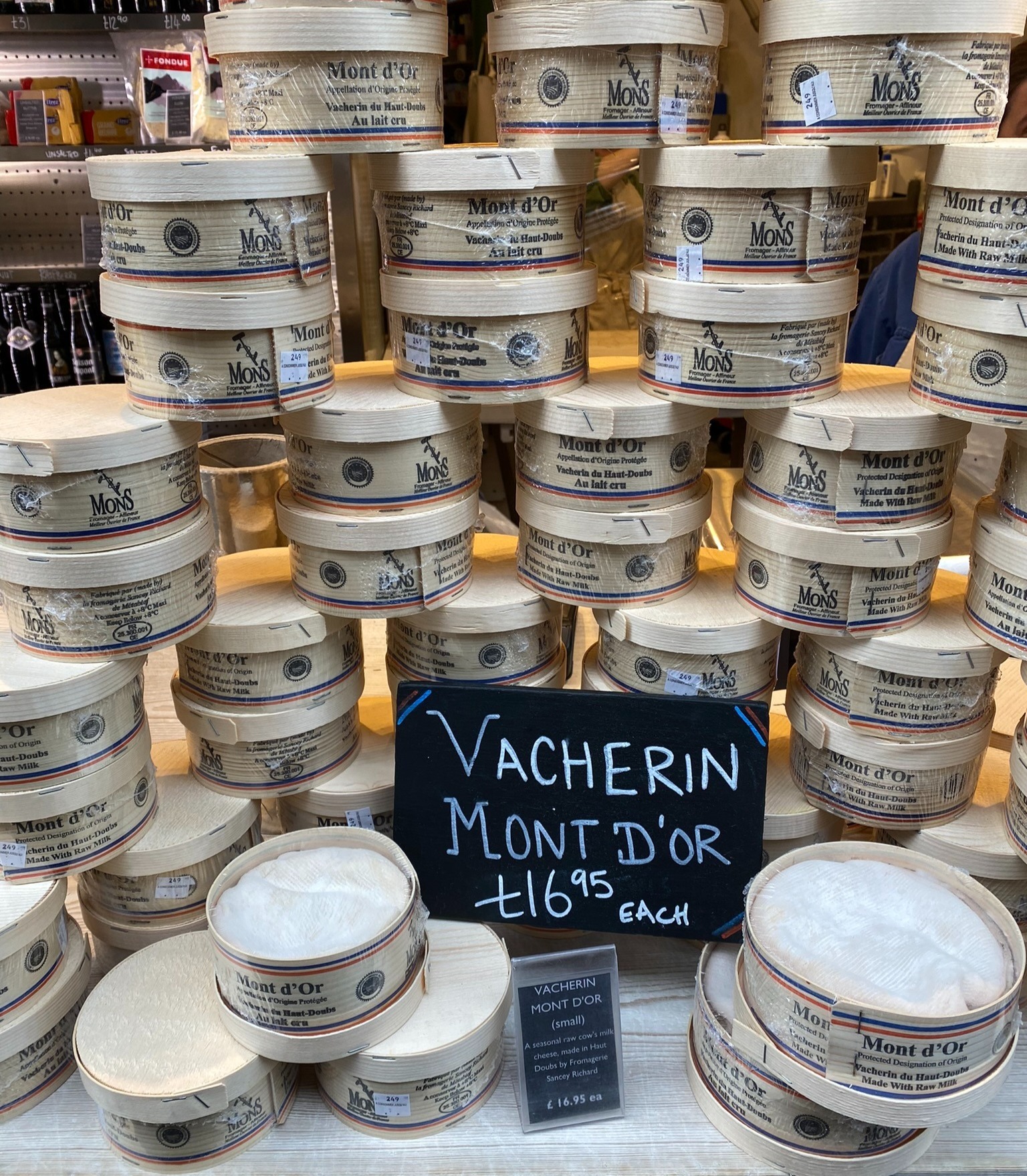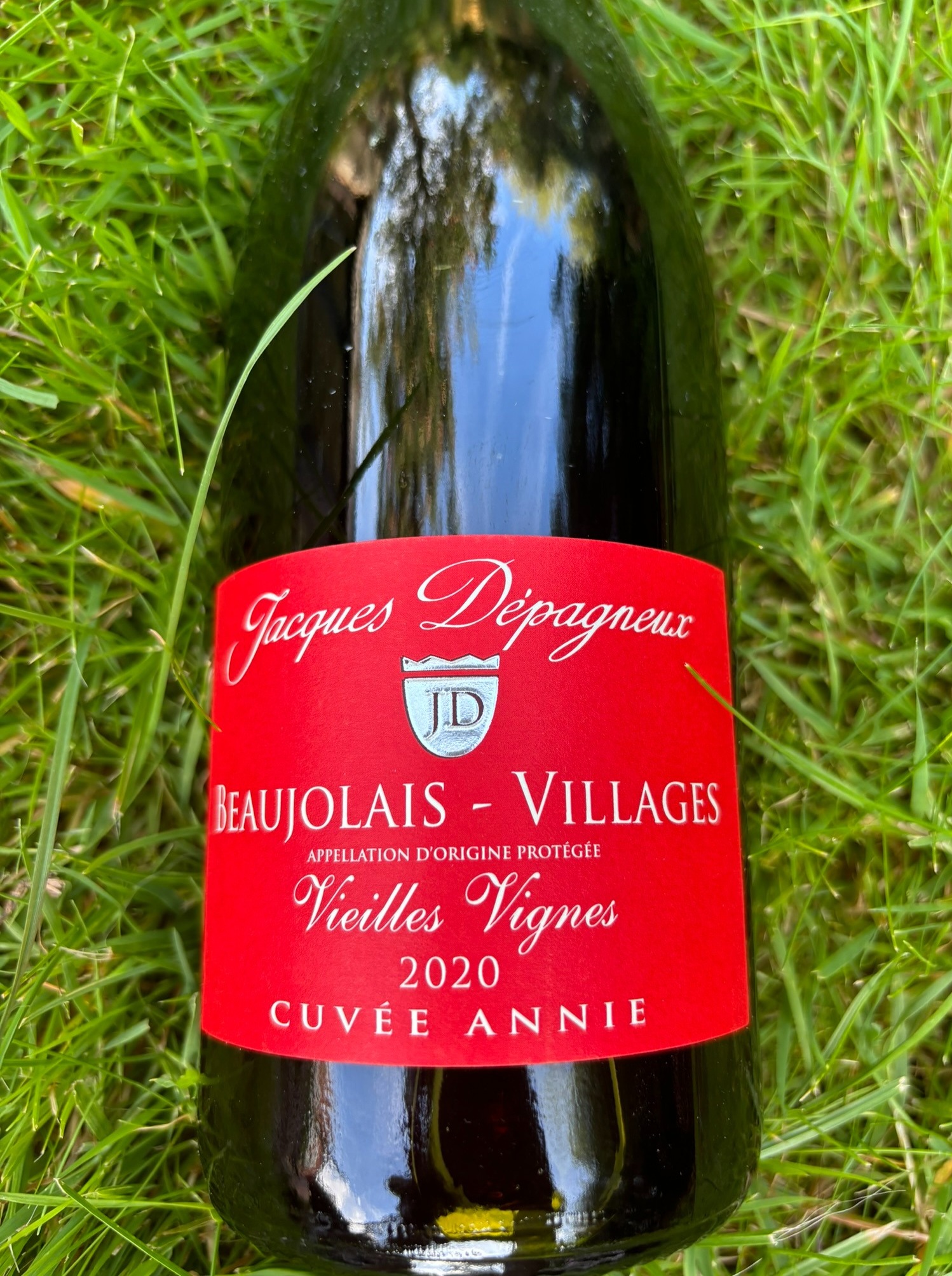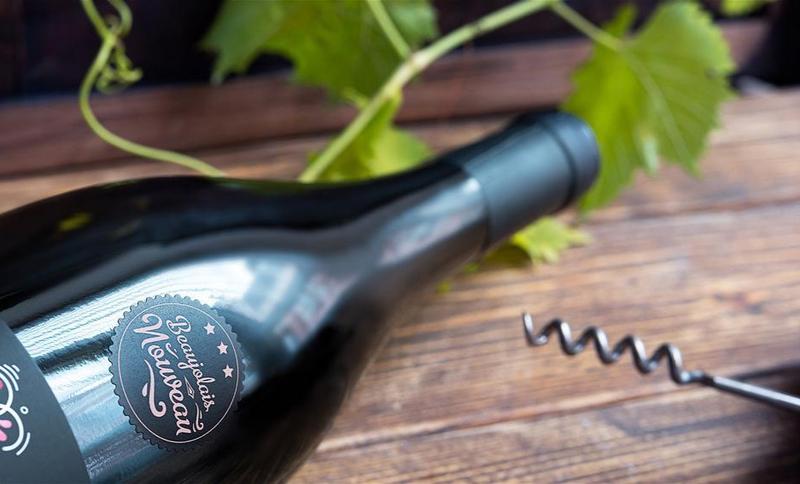

What, wrote Auberon Waugh, could possibly taste good after having been dragged across France on the back of a motorbike and then parachuted into the Thames? He was referring to the new year’s Beaujolais and the indecent rush to be the first to sample its charms. Yes, November means Beaujolais Nouveau day – this year on the 21st. After the challenges of hail and disease in the region, we have even more reason to support the area’s winemakers in 2024. Besides, Le Nouveau is great fun – the Americans and Japanese certainly think so. And the French. Some of them, anyway.
Simple Beaujolais Nouveau and (usually but not always superior) Beaujolais Villages Nouveau are soft and approachable. With bright berry aromas (raspberry, redcurrant, even strawberry) along with kirsch-like cherry and sometimes banana or bubblegum, they are best served lightly chilled. It's the unusual intra-cellular fermentation methods – carbonic or semi-carbonic fermentation – that are responsible for this distinctive profile.
But Nouveau is only half the story. The region also makes serious, age-worthy wines, particularly in the ten Beaujolais crus. Fleurie, Morgon and Brouilly are the most travelled but all have distinct character and are worth seeking out. Whilst the Beaujolais grape, Gamay, doesn’t reach the heights of neighbouring Burgundy’s best Pinot Noirs, in the right hands it can be superb.
The varietal can be hugely productive. Good news you'd think for winemakers? Well, yes if you simply want to maximise yields with little thought to quality or intensity. I think it's fair to say that Beaujolais has seen some of this in the past: non-descript wines with generic red-fruit flavours and little personality, varietal or terroir character. But the wines are increasingly good at all levels, above all in the crus. With winemakers looking to their northern neighbours in Burgundy in terms of winemaking, it's perhaps not a surprise. Gamay has a lot to offer and is especially attractive to those turning from big, oaky wines and for those seeking good value. And the area has been at the forefront of sustainable, organic approaches to winemaking, too.
The beautiful chapel perched a-top Mt Brouilly is dedicated to Notre-Dame aux Raisins which rather says it all. This is the southernmost of the 10 Beaujolais crus, a land where the grape (in this case Gamay) rules supreme. The large hill (not really a mountain …) has its own appellation, the Côte de Brouilly, covering just four little (hilly!) communes: Saint-Lager, Odenas, Quincié-en-Beaujolais and Cercié. The flatter area around the hill is where you’ll find Brouilly itself.
You’d be forgiven for thinking that its southerly location suggests the warmth of a Côte d’Azur lifestyle. Yes, it’s a tad warmer here than the areas abutting the Mâconnais to the north, but it’s all relative. Remember you have the expanse of the Beaujolais and Beaujolais-village homelands and the entirety of the northern Rhône to traverse before you get a whiff of sun-baked garigue and the tang of the Mediterranean proper. But there’s just enough heat here to round off Gamay’s more overly piquant tendencies to produce affable, approachable and highly drinkable reds.
It’s quite a big area, as the crus go, and soils vary considerably, ranging from pink granite to calcareous blue stone and marl. Consequently, wines vary in specific character and there are a number of interesting, quality lieu-dits in the region to check out: Pisse-Vieille, for example and Pierreux.
Given all this, I tend to think of Brouilly as good, solid and reliable stuff but I don’t mean that to suggest either generic or uninteresting. But it is the cru I might reach for if I want friendly and consistent, a wine that will pair with a range of lighter classic French dishes without dominating the scene.
Pardon et Fils is a venerable family-run business based at the very heart of Beaujolais in Beaujeu. They make a range of wines across the 10 crus (and the wider Burgundy region) in addition to Beaujolais and Village-level wines. They also offer a white Beaujolais (Chardonnay) and an interesting 100% Gamay rosé. Their 2023 Brouilly is an elegant and silky red with rounded corners. You’ll get a punnet of quality red fruits here enrobed in a lovely, clear ruby wine. There’s something immediate, honest and celebratory about it. Frankly, just really good stuff.
It’s weighty enough for food but easily quaffable solo as well. The good folk at Inter Beaujolais, the region’s wine council, suggest carrot cake with coconut icing. Not sure I’d go that far, but it does reflect its less formal edge and the relative ripeness of the fruit that makes sweeter meat like lamb a good bet.
Along with Moulin-à-Vent, Morgon is one of the heartiest and most intense of the crus: complex, structured and built for ageing. There’s depth here but not heaviness. We’re still clearly in Beaujolais but seen through a prism of a self-confident area and, often, winemaking techniques borrowed from their cousins to the north in Burgundy (in reality many of the winemakers straddle the two regions). ‘Fleshy’ is how proud parents Inter Beaujolais describe it, but don’t read that as ‘flabby’. Rather, it indicates a breadth, depth and solidity. Toned fleshiness, if you will. And with that fuller body you get perfumed top notes running across the deep blackberry and cherry (occasionally kirsch) fruits. Age brings spiced undertones and hint of lighter loamy forest floor reminiscent (but only whisper this) of the Pinots further north.
One of the larger winemakers of the area, Ch de Pizay (and yes, there is a real château!) make a number of wines with Morgon being at the summit of their output. Hand-harvested fruit grown on alluvial soils is what goes into bottle. What comes out when you pop the cork is a treat. Depth and fragrance that is in no way heavy-handed. There is all the intense cherry and darker berries you would expect, and sufficient tannin and fruit to allow it age for a few years. I haven’t had the will power to age mine for long but you could expect the hedgerow to recede as the wine plunges off into the woodland undergrowth beyond.
Beef in most of its forms (baring something truly gamey and umami) is a good friend to Morgon. It’s elegant enough to serve with roast sirloin or a good plate of steak frites. We’re really not far from Lyons' gourmet streets here so anything indulgent like funky charcuterie and game terrine is a good call, too. I’ve served it very successfully with a souped-up lasagne made with veal mince and chicken livers (don’t tell the Italians or the Lyonnaise come to that!). The sweet acid of the tomatoes didn’t phase the wine and the pasta’s light umami hum complimented its warmth nicely. Morgon even has the kind of delicate strength to cope with one of my favourites from the area, the fantastic Poulet au Vieux Vinaigre. No easy ask for a red.
One final step up the Pizay ladder in price and quality takes you to their Morgon La Centenaire made from a plot planted in 1915. According to them it is said to ‘boast the fruit of a Beaujolais and the charm of a Burgundy’. Can’t argue with that.
French wine laws allow only a handful of wines to be released immediately following harvest. Beaujolais Nouveau is certainly the most famous of these Vin de Primeur (early wines). Local legend Georges Dubeouf was instrumental in globalising the whole Nouveau shenanigans back in the 1960s and now it’s a truly international affair with bottles being hurried across the world to hordes of eagerly awaiting fans. The USA, UK and especially Japan have been going silly for it since the 1980s. Increasing transport costs and trade tariffs have taken a little of the shine off lately but wine bars, restaurants and merchants from London to New York will still be hosting tastings, special suppers and other events to celebrate the arrival of this babe in arms of the wine world.
French festivities inevitably centre on the Beaujolais region itself – the most famous, Les Sarmentelles de Beaujeu, is an epic 5-day extravaganza of feasting and guzzling. But their neighbours in Lyons and the gourmets of Paris are hardly ones to miss out. Bottles of the purple stuff have been raced to their respective city limits since the ‘50s!
You could, with some justification, call Côte du Py Morgon the best of the best of Beaujolais. CdP is an individual vineyard of some renown located at the highest point in the cru. It’s this elevation combined with the unique blue-stone granite/schist soils and profusion of old vines that is, in part, responsible for the complexity of these wines. Proof, if any were now needed, that Gamay is a serious grape given the right growing conditions and in the hands of the right winemaker.
Someone like Jean-Marc Burgaud, in fact.
He’s a local, based in the village of Villié-Morgon, with a degree in oenology and has been making wines in the wider area since the ‘80s. Using the excellent raw ingredients that this vineyard supplies, he manages to create a wine with presence, structure, intensity and identity without either over extraction or falling back on the carbonic-maceration inspired easy-drinking approach to Gamay. These are serious wines: nuanced but not overbearing, and decidedly age-worthy.
Beautiful in the glass, it is dark and inviting. The nose is finely poised between fruity depth and mineral tang. Gamay’s fruits are here, of course, but no longer simply the overly familiar red-berry coulis of some lesser Beaujolais. Instead, the fruit aromas here are locked in that moment when red mulberries turn black, deepen and intensify. Yes, still the bite of fresh cranberry and raspberry but now joined by the bounty of the hedgerow and a hint of warm spice.
Both the variety and the terroir speak clearly through Burgaud’s wines and that is a skill indeed. Texture and weight are very well controlled, too. The tannins adding structure and welcome grip to Gamay’s silk without being in any way intrusive.
I’ve served this for Christmas lunch before now and this mix of piquancy and depth, velvet sheen and bite has risen to the challenge with grace and elegance. It’s a friendly fireside of a wine, a warm inglenook you can lose yourself in but more stimulating and less somnambulant than that image might suggest.
Fleurie has a tendency to be attract two adjectives with annoying regularity: 'floral' and 'feminine'. The former has its roots in a too-easy link between the cru’s name and flowers. However, a bit of digging and you’ll discover that the name Fleurie is thought to refer to a Roman legionary called Florus who settled in the area way back in the mists of time. Even given this linguistic misstep and the power of autosuggestion it entails, I think it is true to say that the wines from this cru have distinctive floral top notes: violets, even rose on occasion. The latter epithet seems unnecessarily gendered to my mind, a rather facile way of indicating the wine’s softness, lightness and filigree delicacy.
The lieu-dit of La Madonne rises up to the chapel of the same name at the highest point of the cru at 450 metres in elevation. The soils there are pink crumbly sandstone (the Arenite of this wine’s name) and still untouched by phylloxera according to Boutinot. Its vines are 40–90 years old; carefully hand-picked and skillfully treated as here, they produce wines of character, perfume and grace.
Boutinot’s take on matters retains sufficient acidity to allow the fruits to really sing beneath the bouquet of flowers that cluster on top: cherry (red and black) and raspberry foremost. This is assured winemaking with a nod to Burgundy sophistication. Tannins are soft but they are present which stops the wine from sinking into too soft a revery and means it can move from aperitif to table with ease. The Beaujolais wine council suggest pairing with local andouillette sausages but you have my permission to pass on those: they are an acquired taste … Nevertheless, there is a savoury undertow to this particular wine which adds layers to its prettiness, nuances which fatty pork products or a rich cassoulet would pick up nicely.
Régnié is the most recent of the crus to be classified, in 1988. It’s only a (rather athletic!) stone’s throw from Beaujeu, 550 hectares of vines hugged by big brothers Brouilly and Morgon and the Village vineyards immediately surrounding the town. But there is altitude here – approx. 350 m in elevation – which makes the wines often lighter, fresher and more ephemeral than their more famous neighbours. As the new kid on the block, Régnié also has yet to really command the prices of other notable locals. Which is rather good news if you know where to look.
This wine is made by the clever souls at Pardon et Fils again, specifically from their own property in the area. The grapes come from an individual, named plot/climat, ‘l'Ermitage’ (nothing to do with the famous northern Rhône Hermitage, I should add) with granite and sandy soils. All this to say, you get home-grown grapes from a very specific location grown at altitude and vinified by some very accomplished winemakers. I’m starting to salivate already.
They use whole-berry, semi-carbonic maceration to ferment the grapes. Sounds rather alarming, but it’s a traditional Beaujolais approach in which the fermentation starts inside the cell of the grapes themselves (or some of them at least, hence the ‘semi-‘). At this level, without added yeasts and in the absence of oxygen, the fruit is pushed forward and tannins kept under lock and key.
The wine then goes through 100% malolactic fermentation during which specific bacteria convert the tart malic acid (malum is the Latin for apple, so think tart green orchard fruits) into softer lactic acid (think milder, yoghurty freshness). Its fairly standard for red wines unless the winemaker is struggling with low acidity in which case it might be blocked. Unlikely with a high-altitude Gamay like this. The wine then matures in vat for about eight months before bottling.
What emerges from all this husbandry and alchemy is a fresh, piquant wine that wears its youthful energy as a badge of honour. But don’t read that for pale, wan and immature. There is power here too and some ageability. It’s deeply fruity (thanks in part to the fermentation process detailed above): crunchy cranberry and raspberry. And there’s a faint floral haze drifting over the top that confirms this as cru-level stuff and speaks to the elevation of the vineyard.
Quintessentially French (whatever that means … maybe it’s all those acute accents), I wanted to try it with trad fayre. I went for a confit duck leg crisped in the oven and served over pommes Anna with a sweet-sour cherry jus. Great!
From north to south (roughly!) the 10 wonderful crus:
Saint-Amour
Juliénas
Chénas
Moulin-à-vent
Fleurie
Chiroubles
Morgon
Régnié
Côte de Brouilly
Brouilly
The goodly folk at The Wine Society call J-P Brun a maverick. Whatever the truth of the matter, he produces some exceptional wines from his base in the south of the Beaujolais region. A champion of ambient yeasts and low-intervention winemaking, he releases Gamay wines from a number of the famous Beaujolais crus as well as a rather fab ‘simple’ Beaujolais (L'Ancien) and a Crémant (de Bourgogne, of course). His only still white, this Chardonnay, comes from a plot of 80-year-old vines on clay and limestone soils. And it’s fantastic.
A clean, clear and relatively anonymous lemon yellow in the glass, it takes a while to open up and reveal its charms. Initially, there’s a pleasant, muted lemon tone but slowly savoury, vinous notes appear alongside with a little grapefruit playing over the top. The nose continues to develop as you explore deeper: first, stone fruit (not quite peach, more nectarine) and then a beguiling tang of yeastiness chimes in to provide a counterpoint to the simple fruits.
Chardonnay is a chameleon grape which can all too easily rely on baskets of fruit alone or, conversely, hide them too deeply beneath overly-energetic winemaking techniques. Clever producers balance the two and when they get it right, as here, it reminds you of just why the variety conquered the world.
The wine has nice weight in the mouth, the palate showing interesting yellow-apple slices with lemon juice squeezed over them: golden orchard fruit flavours kissed with bright acidity. Then that big savoury undertow kicks in. This is an intriguing wine that takes its cue from further north, outstripping many an all-too-ordinary Mâcon in the process.
I'd be tempted to call it a winemaker's wine were that phrase not ultimately quite so meaningless and this wine quite so darn drinkable; it's really quite affable behind its elegant façade and skilfull execution. I usually prefer a hint of oak with my white Burgundy but I really don’t miss it here at all. Life-giving and life-affirming, it is made without sulphites and with his usual ambient yeast which gives the finish a really intriguing salted-quince appeal.
The wine’s simple labelling belies its quality. But how refreshing it is – no fictitious château here or grainy pics of C19th crims. Just an elegant and extremely accomplished wine that would grace any table, especially if furnished with poularde demi-deuil or an autumnal roast-squash risotto.
Founded in 1859, négociant Maison Louis Jadot started out selling local wine to northern Europe. They remained, until recently, a family-owned affair and are still based in the heart of Burgundy, in Beaune. Today, they are one of the wider region’s biggest quality producers, their wines instantly recognisable from the baroque Bacchus heads of their labels.
Domaine Jadot and a couple of other properties they have acquired connect them to some of the most famous names in Burgundy: Gevrey-Chambertin, Clos Vougeot, Musigny, Meursault, Puligny Montrachet … they have a truly impressive stable of the great and the good of Burgundy. They are truly an international affair, too, with the launch in 2013 of their 56-hectare Résonance vineyard in the Willamette Valley in Oregon. Their aim there is to make expressive west-coast wines with, as they put it, 'a Burgundian accent'. Now, that is exciting!
Back home in France, Château des Jacques became part of the family in 1996 bringing with it 68 hectares of prime Beaujolais vineyards in Moulin-à-Vent, Morgon and Fleurie. The grapes for their Combe aux Jacques are drawn largely from the granite, clay and calcareous soils around the quality villages of Lantigné, Lancié and Régnié which nestle amongst their cru-level cousins. Individual parcels are vinified and matured separately in stainless steel and then blended for create the finished wine (Jadot also produces single named-village Beaujolais – a Quincié and a Lantigné – from grapes sourced solely from their respective homes).
This cuvée is pure fruit joy. Juicy, juicy red fruits but still crisp and refreshing. Well-managed tannins provide an important backbone to all this rubied smoothness: tannins tamed and on their best behaviour. Fair to say, it’s neither especially long in finish nor particularly pronounced in intensity but it is brilliantly drinkable, dependable and friendly without being either simple or too easily forgettable.
I wanted this with smoky things. Don’t judge, but bacon crisps sprang immediately to mind. Also more grown-up food stuffs like smoked-pancetta-and-blue-cheese pasta or a roast guinea fowl with smoked garlic. A lovely veal ragu perched a-top butter noodles would also make a perfect accompaniment to a nice glass of this mid-week charmer.
Village-level wines can offer a treasure trove of good winemaking. Lacking the glitz and glamour of a cru or a named village but a cut above regional wines, they can fly a little under the radar and often have price tags to match. The Beaujolais Villages vineyards sit to the north and west of the region, furthest from the Soane River. There are 38 villages in total split roughly into three zones: the southernmost portion cheek by jowl with the vast Beaujolais-producing area that stretches away towards Lyons; the area around Beaujeu, to the west of the most southerly cru; and a couple of smaller enclaves nestled amongst the most northerly of the region's named growths.
Unsurprisingly, wine characteristics tend to follow this geography, with fruity bonhomie dominating the south and more structured elegance to the north. This is a generalisation, of course, but it helps to orientate yourself in such a diverse region. The majority of the wines are red Gamay, inevitably, but you can find whites and rosés if you look hard enough. And there’s Beaujolais Nouveau Village as well (about 40% of the total Nouveau phenomenon, in fact).
This producer, Les Vins Aujoux, is a négociant (someone who buys grapes or, more usually wine, and matures it for sale under their own labels). They have been working with the Wine Society for years, apparently (from whom I sourced this bottle). The wine comes with the illustrious local-winemaking name of Jean Dépagneux attached; the Cuvée Annie is produced from old vines which adds again to its appeal.
I was really impressed when I tried the 2020 recently. Clearly a step up from generic Beaujolais, it was eminently drinkable – approachable and food friendly. Typical Gamay red fruits, soft tannins and supportive acidity mix with silky texture and the distinct impression of really good fruit. Sounds rather an odd thing to say, but that hasn’t always been the case with Beaujolais and with négociants.
This is the sort of wine I want on a Thursday. Very specific I know, but it’s ideal to bridge the gap between weekday kitchen supper and full-on weekend gourmandising. It can take a chill as well if you fancy upping the freshness further. A good friend to creamy cheeses of more serious and richer mien, like Vacherin. And I can't think of anything better with which to make Oeufs en meurette (meaning you can save your Burgundy for 'le weekend').
Get to know more about Beaujolais Nouveau and the Beaujolais crus with my full-length articles:

The official website run by Inter Beaujolais, the Beaujolais wine council: tons of great info.
